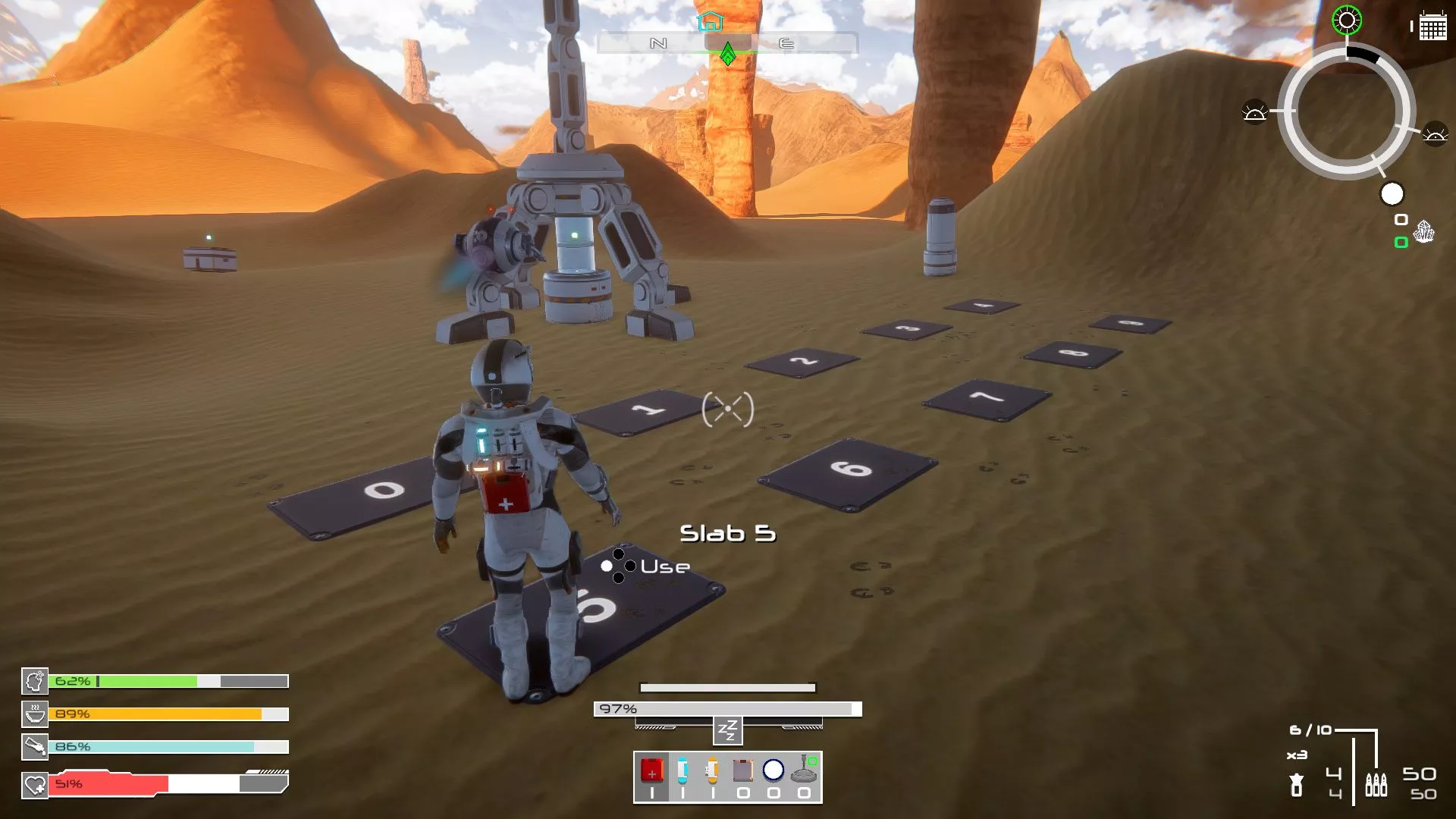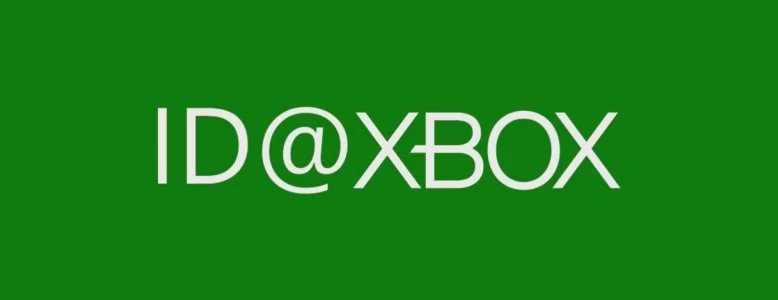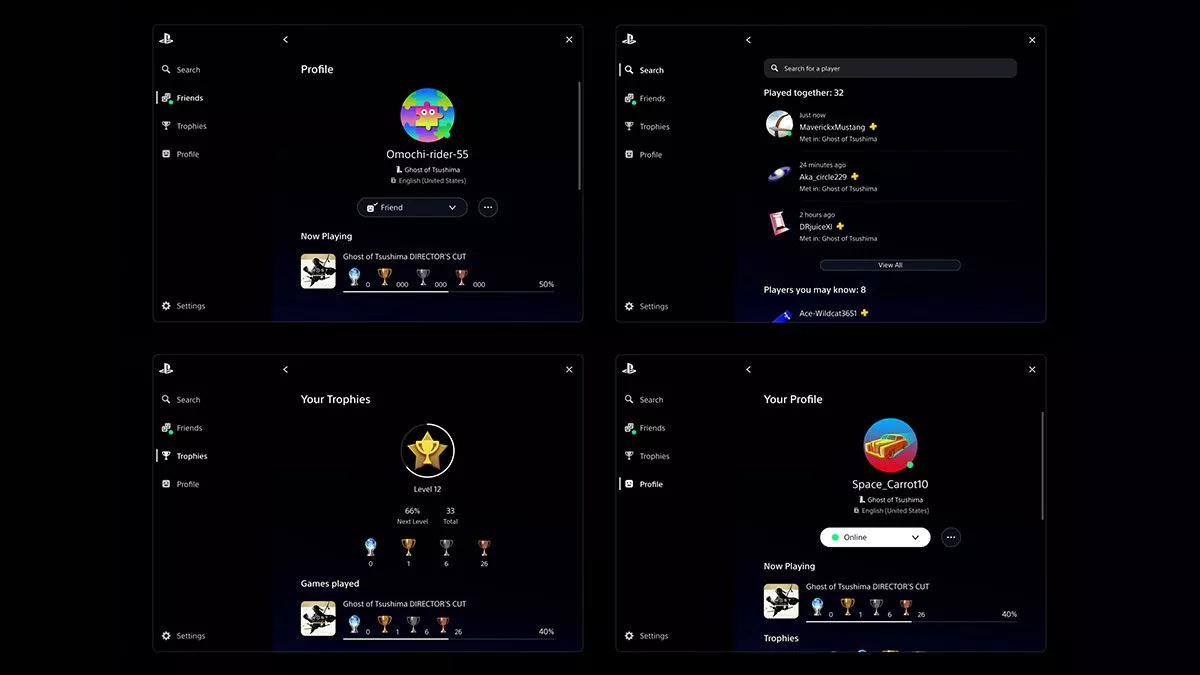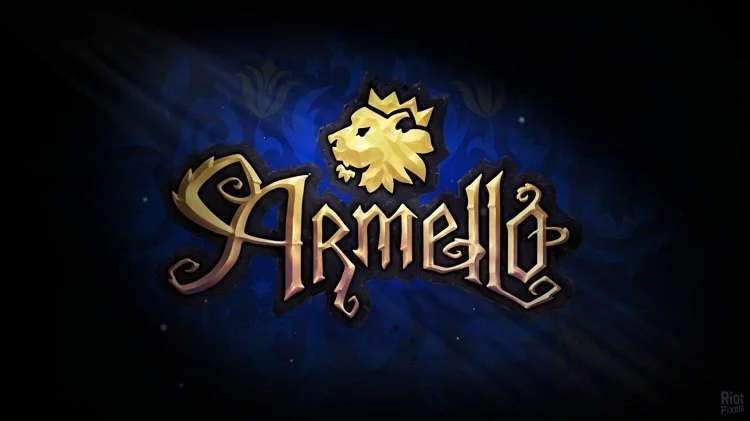During this year’s PAX Australia, Stevivor’s Matt Gosper sat down with one of League of Geeks’ directors, Trent Kusters, to discuss the gaming collective’s upcoming title Armello. A fantasy world populated by anthropomorphised animal clans, Armello is a self-directed story of swords and words that can change the world. Read on for gameplay details, the advantages of a digital board game, and the challenges of Kickstarting your title.
Matt Gosper, Stevivor.com: I just wanted to start, for anyone who hasn’t seen the game this year at PAX or previously, with a brief overview of the concept of the game?
Trent Kusters, Armello: So, it’s a digital card and board game – imagine Game of Thrones meets Kung Fu Panda. You play as a hero from one of the four clans of Armello, and you’re out on a quest to become King or Queen of Armello. The King is dying of this dark force called the Rot, and so the clans have come together and seen it as their point where they can usurp the King and take the throne for themselves. And so that’s what you’re out doing; you’re questing, vanquishing monsters, scheming and plotting against the other heroes, equipping cards and items, looting dungeons – a whole range of things.
Stevivor: Beyond the King and his forces rallying against you for trying to take his place, what sort of challenges are there within the game for players?
Kusters: Players can play cards on the board as Perils, and when you play them as Perils they act like trap cards on the board. When another player walks onto that tile – because it’s a hex-based board – that card will come up onscreen and they have to roll their die to test a particular stat to evade that particular card. They play as story beats essentially, to the board; I can hire a band of Merry Thieves and get them to hide out in a forest, and if someone comes along and trips them but isn’t able to roll their fight dice to evade them, they’ll lose a card or gold.
So from there we also have Banes moving around the board, they’re NPCs that spawn from dungeons which are pure Rot. Should they destroy you, then you gain a point of Rot as well. And of course there’s also the other heroes moving around the board that may want to… Dispense of you.
Stevivor: So within the game, what are the main win or loss scenarios?
Kusters: Well there are multiple paths to victory, you can take out the King in a number of ways. You can storm through the palace and attack him full-force and try to beat him in combat. You can go for the Spirit Stone victory where you still storm the palace but you’ve collected four magical artifacts called Spirit Stones that mean you can just walk in and banish him, and the third option is Prestige.
And so Prestige is the person who is in the King’s favour. You get Prestige, which is a resource, for doing the most heroic deeds. So completing quests, vanquishing other heroes, killing Banes, things like that. If the King dies of natural causes – because his health is constantly declining – if he dies of natural causes and you’re the Prestige leader you’ll be named the King or Queen.
The last one is the Rot victory. So basically we have a ‘dark side of the Force’ thing going on where if you’re playing dark cards, if you’re getting destroyed by the Banes or another player who has the Rot, essentially you can gain points of the Rot. It gets to a point where if you have more points of the Rot than other players, you’re more powerful and you can walk all over them, use their Rot against them. The King is constantly gaining Rot, and if you get more Rot than him you can walk into battle and basically just crush him with your ‘dark Force’. If you do that, that’s a Rot victory. It’s one of the hardest ways to win but it’s one of the most rewarding.
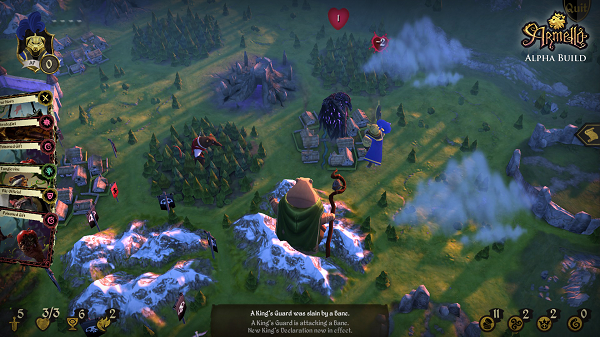
Stevivor: Now you mentioned there’s the four main factions within the game. Can you say a little about them, what their main strengths are?
Kusters: So the Wolf Clan are our pragmatic fighters, they’re traditionalistic, they’re not superstitious, they’re hardy. They’re from the cold northern mountains of Armello, and they’re our fighters. We’ve already announced Thane, he’s one of our original heroes. He’s our swordsman, our Jamie Lannister moving around the board. We’ve also got a female wolf ranger we’ve announced, she has a bow and ranged abilities. Then we have the Rabbit Clan. They’re the artisans, the tinkerers of Armello. They’re our all-rounders and have a bunch of coin to boot. Next is the Rat Clan, your political players in Armello, the power brokers who are scheming plots and assassinations in the background. They play cards from the trickery deck. Then you have the Bear Clan, and they are our magic casters. They’re in touch with the wild, and all of Armello’s magic is forces of nature, your connection to nature. We have Sana who’s a druid, and we’ve announced a war-caster as well.
Stevivor: As far as the development of the game, where did the idea come from – any main inspirations, or something you wanted to achieve?
Kusters: There are four main key creatives on the game, the four directors of Armello. We all have different influences. A lot of the design was heavily influenced by three of us; I’m very into story-based RPGs and mechanics that play a lot of story through their own emergent narrative. Things like Fable, really light RPGs. There’s a bit of that in there. Then you have Blake (Mizzi) who’s really into his war games and his tactical military board games, there’s that positioning board game stuff. Then you have Ty (Carey) who’s writing to his bespoke weird card games. He’s a hardcore strategy player and he’s really getting that across.
There were a few things, like Talisman was an influence as a sort of antithesis, we wanted to fix a heap of things that were wrong with that. We played some Illuminati and loved the backstabbing and political plays that come with Steve Jackson’s Illuminati. Also Red Wall, the Brian Jacques (book) series, that was a starting point for us. Things like MouseGuard, The Dark Crystal, Labyrinth – even just stuff like Star Wars.
Stevivor: Did the team come together for this game?
Kusters: No, we came together wanting to make a game, and this was the game that came out of that process.
Stevivor: I believe at some point there was a physical version, a prototype of the game? Has much changed in the move to a digital format for Armello?
Kusters: Not the basic gameplay, the core gameplay of Armello is all there and intact. It’s still the game we set out to make on that board. Basically what it is, when we moved to digital there were some things like communication – some things in a board game that aren’t communicated in a digital game. Sitting around a board game you see what everyone does, that doesn’t happen here so we’ve got to compensate for that stuff. It’s also very much paint-by-numbers, you’ve got the board game we’re moving to digital, it might be instead of green this should be teal. We sort of changed and shifted some things around.
Stevivor: One of the big advantage in moving Armello to a digital format is the animated artwork – which looks amazing. Who is responsible for that?
Kusters: Ty Carey is the art director, he’s our aesthetic guardian and gatekeeper. He works with a team of over ten artists that are based all over the world, in Florida, LA, Wellington, Perth, Sydney and he manages all of them to come together – he’s handpicked them from the depths of the internet. People we’ve worked with before in our careers to deliver this level of quality. And it all comes through him, he filters it all.
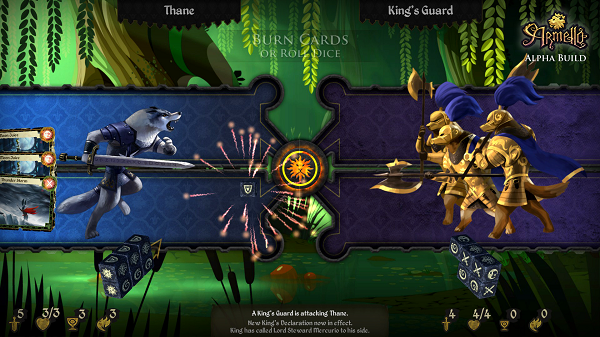
Stevivor: Was there any particular inspiration for the artistic style of the game?
Kusters: The big theme with Armello that runs through all of it, is duality and contrast. We love Miyazaki, how it can be bubbly and pastel-y and beautiful and rich and magical, but then you can have those darker moments that come in at just the right time and they’re contrasted. There’s just a particular level of quality in execution we’re trying to maintain. Then there are also things like The Dark Crystal, you can see our Banes kind of look like Skeksis. It comes from a bunch of areas, it comes from a lifetime of wanting to make something like this. This is, turn the taps on full bore and this stuff pours out.
Stevivor: In the past year you’ve run a very successful Kickstarter campaign, hitting 150% of the $200,000 goal. How has that affected development of the game?
Kusters: Oh, immensely. We’ve been able to jump into a studio and have a team of six to eight people working on it all the time. It’s ensured we can come to PC, Mac and Linux, we can do cool things like give the backers a Bandit Clan, make sure there are improvement in the game. We brought on Lisy (Kane), our community manager and producer which makes the whole team run more efficiently. It’s also brought a whole heap of attention to the game. We had some good press before and people knew about Armello, but it’s another thing running a $300,000 Kickstarter, that turns some heads.
Stevivor: Have there been any drawbacks from running the Kickstarter?
Kusters: Yeah, naturally – but it’s funny, because it’s also the best thing. We have a community of 6000 backers that are there, some of them are playing the game now and giving us the best input. That’s why we went to Kickstarter, they’re helping change our game. But at the same time you do have a community to manage so it takes on a lot more of your time, it pushes timelines out. There’s also the scary overhead that you promised this thing, and you gotta do it. Do or die.
Stevivor: You mentioned the new Bandit Clan coming in with the Kickstarter. Is there any other content coming to the game as part of that?
Kusters: Through the stretch goals we added a winter tileset, an alternate tileset which will appear in the game. We got a bunch of new cards, I think about 20 more cards that came into the game because of the Kickstarter. And as we go along we can’t help ourselves, if something could be cooler – we went away for the weekend and I think we added five cards to the game.
Stevivor: Now, there’s been a lot of gaming Kickstarters over the last few years, such as Double Fine’s adventure game getting a lot of publicity. Some of those games have suffered from delays or setbacks from overreaching on Kickstarter. For you, having seen that happen, were there any safeguards or rules you put in place for yourselves to prevent that happening?
Kusters: We didn’t do any stretch goals, like ‘all platforms, PS4 and Xbox if we hit this stretch goal!’, we didn’t say, ‘ten more maps!’ or anything. Everything we did was very measured. We checked against everything. We did diligence for almost a year leading up to the Kickstarter in regards to the costing of things and making sure we weren’t overpromising. In fact, we kind of underpromised and we plan on overdelivering. And then also, just making sure we were setting up relationships to ensure if the worst thing happens, we still have people there who can swoop in and say ‘Hey, we’ll help you get the game out even though you blew all your money and you have to tell your backers that it’s not coming’. That’s not going to happen. We’ve got things in place to make sure we can ship the game and everyone’s rewards, and it can be as good as people want it to be.
Stevivor: There were quite a number of stretch goals for the game – was that the full reach of what you had planned?
Kusters: No, there’s s**t-tons more stuff we want to do! We had to knock it back, you know? You want to promise the world but you have to be sensible at the same time. We went through and cherry-picked things that really enriched the game, provided content that people were into. That’s why we added to the stretch goals at the end as opposed to just sticking with what we had.
Stevivor: In displaying Armello at PAX and other events around the world, how has the game been received locally and internationally?
Kusters: Oh, fantastically. As soon as people see it, it hits a switch, something clicks and they’re like, ‘Oh, this is the game I’ve been waiting for’. In fact, another developer we really respect that runs a stupendously successful indie studio – who will remained unnamed – said to me, ‘I didn’t know I wanted a digital card and board game until I saw Armello’. That sort of sums it up, I guess. People see it and it’s so different that they just say, ‘Oh my god, this is… Yeah. Totally. This a thing that can exist and I want it.’
Stevivor: In developing the game and displaying it at events, how has feedback affected the game? Any changes you’ve made?
Kusters: Definitely. We have forum posts that are 10,000 words long from our backers and we read every single one. We join in the discussion and even if we can’t, we discuss everything in the studio. If it’s a good idea then it goes in-game. We just want to – design is all about finding answer to problems, finding solutions within a set of constraints. When people are throwing potential solutions at you, if they can figure it out we’d rather they do it! In fact we’re palming off a lot of our card designs to them because the power of the crowd will always outweigh what WE can do in-game. We still control the say on what goes in, so its filtered through us, but it’s just… ‘Hit us with ideas and let’s get some cool cards in-game.
Stevivor: Any one big change or addition you can think of?
Kusters: Yeah, just generally the communication stuff. That’s the big thing. It wouldn’t be anywhere near as playable or understandable if it wasn’t for the backers saying ‘I don’t know when I die and it sucks, I need to know if I die!’ and we say oh yeah, you totally do! Because we’re so close to it, I know when I die, and so bringing that stuff across for sue. Even them saying, we don’t need this, this feature kind of sucks – not because it’s bad but because I never use it.
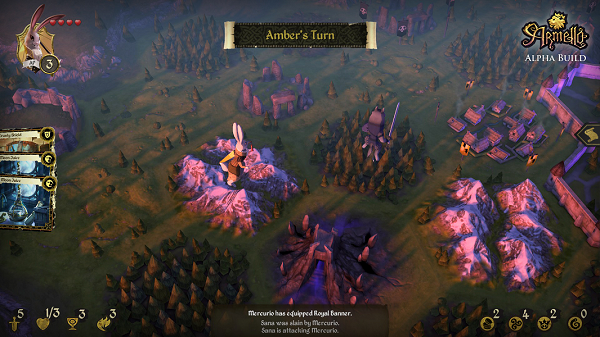
Stevivor: So leading up to the game’s release, what platforms are you targeting?
Kusters: PC, Mac and Linux on Steam and DRM-free, then we have all the tablets – so Android, Windows tablets and iPad.
Stevivor: Has it been difficult developing for that many differnet platforms at the same time?
Kusters: Well, for now the tablets are on hold until we can get to them. We keep them coming along but we’re staggering those releases. We work in Unity, and Unity makes it very easy to hot-swap between platforms. We literally press a button and it pushes builds out to PC, Mac and Linux. It’s probably cheapening the hard work we do a little bit there, but Unity’s awesome. We use it and it makes our job so much easier than it probably should be.
Stevivor: So at this stage, what’s the expected rollout time for the release of the game?
Kusters: January next year we’ll be doing Early Access on Steam, and probably mid-2015 we’ll roll out the full release.
Stevivor: Lastly, if you had to name one ‘cool thing’ to draw people in, what would you pick?
Kusters: Backstabbing your friends. That’s it. That’s one of the reasons we started making this game, so you can be someone’s buddy right up to the end and then snatch the throne from their cold dead paws. That’s what Armello is all about.
This article may contain affiliate links, meaning we could earn a small commission if you click-through and make a purchase. Stevivor is an independent outlet and our journalism is in no way influenced by any advertiser or commercial initiative.


